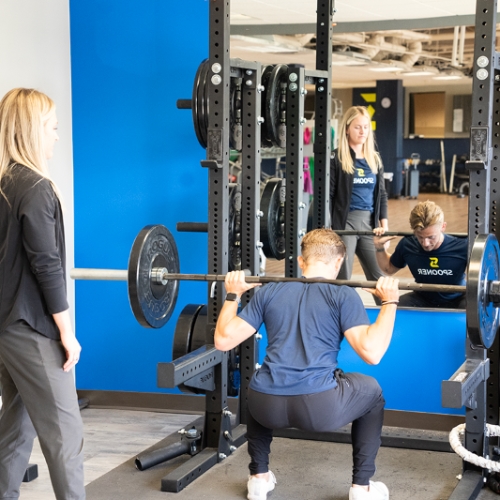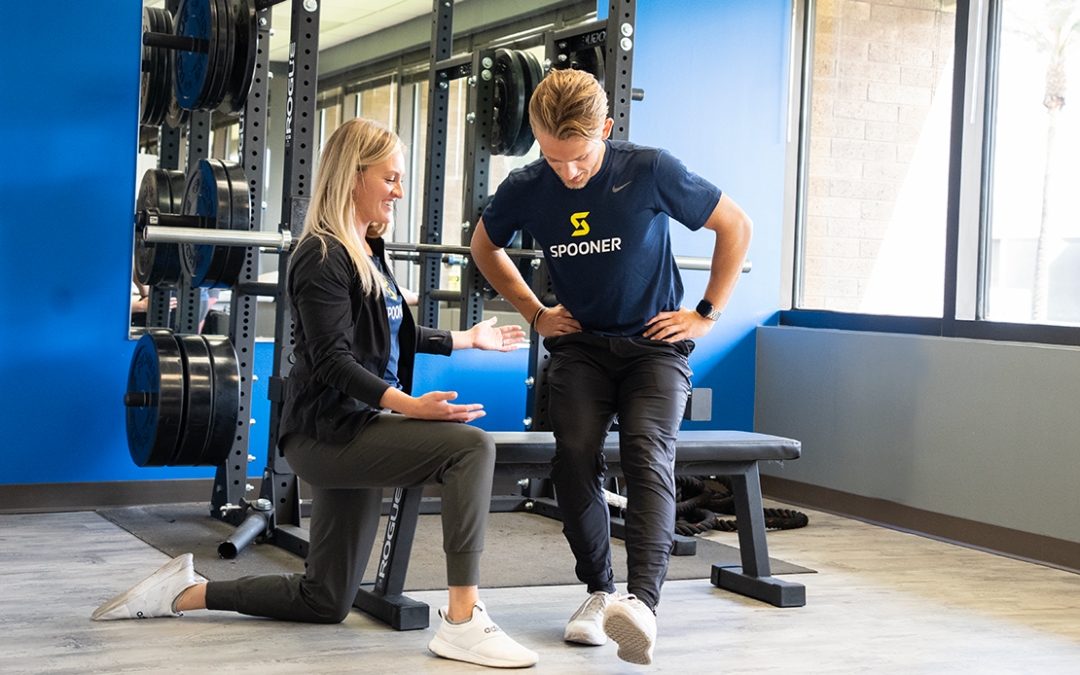By: Megan Ferguson, PT, DPT, ATC
Running is one of those rare sports where all you need is you and the road (or track)! You grab your shoes, your water, and whatever other gear you need and head out the door. Your workout- whether it’s a timed run, a distance run, or interval training- really just needs you! But even with a sport like running, diversifying your workouts and cross-training is imperative to you running your best while also reducing your risk of injury.
When cross-training, don’t forget to focus in on strength. Running is a single-leg sport. As your foot meets the ground in your stride, there is a ground reaction force of 2.0x your body weight. If you take your body weight a multiply it by two, that is going through one of your legs with each stride.
For a single leg to take on that load, it must be strong and stable. Without proper strength, a runner will likely have poor running mechanics and efficiency. This can lead to increased stress through the kinetic chain and can result in injury.
Learn more about the Kinetic Chain in “What Are Kinetic Chain Reactions” on the Spooner Blog!
Test Your Strength
There are some quick and easy ways you can determine if you need to focus even more on strength:
- You should be able to complete a single-leg squat and hold it at its depth for 20 seconds
- You should also be able to complete a rear foot elevated split squat and hold for 20 seconds at its depth for 20 seconds.
While this is not an all-inclusive list, if you are unable to do these, strength training would definitely benefit you and your ability to run efficiently and with less risk of injury.

Benefits of Strength Training
As stated before, strength training can reduce the risk of injury in runners by building up the stability and supportive musculature needed to take on the load of a stride. Alongside this, strength training also:
- Improves Running Biomechanics,
- Improves Efficiency,
- Improves Speed, and
- Improves Endurance.
5 Strength Exercises for Runners
Since running is a single-leg sport, it is imperative to do single-leg strengthening exercises. However, it is also important to train with double leg exercises as well in order for you to progress the needed intensity and subsequent strength required for running.
Here are 5 exercises that can help improve your strength for running:
1. Split Squats
Start with one foot forward and elevate your rear foot on a step, chair, or bench. Lower yourself down. Rise and repeat.
Split Squats
2. Single-Leg and Double-Leg Squats
For single-leg squats, stand on one leg, sit hips back as if you were going to sit down in a chair. Squat down as far as you can.
For double-leg squats, start with your feet shoulder width apart. Sit back into your hips and squat down as if you were going to sit into a chair. Be sure to keep your weight evenly distributed between your feet.
Single Leg Squats
Double-Leg Squats
3. Single-Leg and Double-Leg Romanian Deadlifts
For single-leg, stand on one leg, keep your core tight, and hinge from your hips while keeping your hips level.
Fir double leg, start with your feet shoulder width apart and keep your core tight. This movement is driven from your hips. Hinge at your hips- driving your hips backward with a neutral spine.
Single-Leg Romanian Deadlifts
Double-Leg Romanian Deadlifts
4. Step Ups
While standing in front of a step, place your foot onto the step and step up. Fully straighten your knee and stand up straight. Lower yourself back to your starting position and repeat.
Step Ups
5. Step Downs
Begin by standing on top of a step with a stable surface on the side of your body you are exercising. Plant your exercising leg, lift the opposite leg, and slowly lower yourself so you can tap the floor with your heel. After the heel makes contact, press up through your working leg and bring your other foot back up onto the step to stand.
Step Downs
If you want to elevate your strength training days, make any of these exercises 3D- add rotation, side-to-side, or upper extremity movements to the exercise. For example, you can add rotational, cross-body reaches to your squats, or you could do side lunges. This allows for your body to prepare for any unexpected movements that may occur while running.
Rotational Step Ups
Rotational Step Downs
Physical Therapy for Runners
While adding in cross-training with strength workouts is important to your overall health and running efficiency, being seen by a movement expert can help you reach specific goals you have or address any underlying weaknesses that may lead to injury.
Spooner physical therapists can assess your specific running mechanics, upper and lower extremity mobility, as well as your strength. Based on our assessment, we can build an individualized program to address any impairments and properly prepare you to reach your goal as a runner- whether that be to improve your running or rehab back to running following an injury.
Schedule an appointment with a Spooner therapist today!

